|
In this Issue...
- Meetings in the Era of Covid-19 - The IBNS Online Poster Session
- Quarantine and Returning to School: Student and Postdoctoral Perspectives
- Kalo the Raccoon – An Innovative Response to the New ‘Normal’
- 2021 IBNS Annual Meeting Keynote Speakers
- Call for Symposium Proposals for IBNS 2021
- Recent Trends in Behavioral Neuroscience
- Guest Editor Profile - Dr. Nicole Ferrara
Meetings in the Era of COVID -19 - The IBNS Online Poster Session
 Review contributed by: Review contributed by:
Julianne Jett, PhD
Postdoctoral Research Associate
Washington State University
We were all disappointed to hear the 2020 IBNS Annual Meeting in Glasgow was canceled, but were equally aware that it was the right call to make given the uncertainty of ongoing COVID-19 pandemic. In addition to the adventurous meeting locations and outstanding caliber of research presented, IBNS stands out from other conferences due to its strong sense of community and focus on the professional development of young scientists. The continuing need for community and scientific productivity during the various social distancing and quarantine measures being implemented throughout the world in response to the pandemic is precisely why IBNS President Jared Young proposed an online research forum in lieu of the annual meeting this year.
I was excited for the potential of IBNS to venture online, but must admit I was a little hesitant to accept Jared’s request that I chair the IBNS 2020 Online Poster Session. Like many of our members, I was mentally taxed with figuring out how to navigate my career alongside an enthusiastic 2-year-old officemate. I also knew that IBNS had no prior experience with online forums and so there’d be a steep learning curve for the committee. But, when there is a will there is a way! Thanks to the determination and dedication of the Augmented Reality Online Poster Committee members (Stephen Kent, Jared Young, Scott Hall, Fair Vassoler, Jill McGaughy, Gregory Carr, Daphne Ling, Donald McEachron, Elizabeth Byrnes, Sarah Baracz) and Executive Director Marianne Van Wagner, we not only put together a virtual forum to support young scientists’ professional development during COVID-19, we did it for next to no cost for attendees.
Low registration fees were, in part, an effort to give those that have historically not been able to attend the in-person meetings due to travel costs the opportunity to get to know IBNS. This approach proved effective as 252 abstracts were accepted from 27 countries*. In addition to the high number of abstract submissions, we had a total of 388 registered attendees making the 2020 Online Poster Session the largest IBNS event in the organization’s history! For the poster session itself, presenters attached video recordings of themselves presenting to their poster image. Attendees were then able to watch presenters give their posters and exchange Q&A via Whova app (see: https://whova.com/). In efforts to bring a sense of community to the online forum, as well as provide those new to the organization with an opportunity to learn more, the weeklong event ended with social meet-ups hosted by committee chairs (Janine Kwapis, Daphne Ling, Debra Bangasser, Fair Vassoler, Jared Young, and myself). During these meet-ups, we said hello to our colleagues, answered questions about IBNS, gained perspective on how COVID-19 has impacted research around the world, discussed diversity, and asked fellow educators how they anticipate managing the fall semester.
As with anything new, the Augmented Reality Online Poster Committee learned a lot about what works well and not so well in online meetings from this maiden voyage. We greatly appreciate those who took the time to provide constructive feedback on the post-meeting survey. We were also pleased to see a number of attendees say they’d be interested in attending future IBNS meetings if held virtually. For many, virtual is the only way they can afford to attend annually. As such, the Augmented Reality Online Poster Committee hopes that IBNS will build on what we’ve learned this year and continue providing some aspect of the in-person meetings online. Doing so would truly reach and include researchers in behavioral neuroscience from all corners of the world.
Lastly, to those who gave their valuable time to make this event happen amongst navigating their own personal/professional lives during COVID-19 (Augmented Reality Online Poster Session Committee members, Marianne Van Wagner and team, Social Meet-Up hosts), thank you for your willingness to try something new, learn with me, and continue the promotion of scientific collaboration and professional development during this new normal of social distancing. To our membership, no matter what form the IBNS meeting takes next year, be it in person or virtually, I hope to see you there – till then stay well, stay safe!
*Countries presenting: Australia, Bangladesh, Belgium, Brazil, Canada, Czech Republic, Denmark, France, Georgia, Germany, Hungary, India, Iran (Islamic Republic of). Ireland, Japan, Mexico, Poland, Romania, Russian Federation, Singapore, Spain, Sweden, Switzerland, Taiwan, Turkey, United Kingdom, United States.
Back To Top
Quarantine and Returning to School: Student and Postdoctoral Perspectives
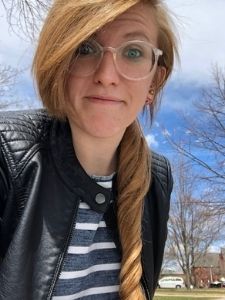
Dr. Sydney Trask, a postdoctoral fellow at the University of Wisconsin-Milwaukee, where she studies the neural circuitry underlying fear memory formation and retention.
Physical distancing and isolation have left many of us feeling disjointed from the scientific community and missing having the ability to make progress in lab. As a postdoc, it has been difficult to feel like you can keep in touch with friends in the science community and be in lab. Many researchers during quarantine, including myself, have used this time to analyze data in different ways, learn coding software, start collaborative writing projects, and think about grant ideas. Dr. Sydney Trask, postdoctoral fellow at University of Wisconsin-Milwaukee, says that this has been an opportunity for her to catch up on data analysis and writing projects that she would not have had the time for. It may be nearly impossible to feel “caught up”, but Dr. Trask notes that this has been a good time for her to polish work from her projects. Similarly, these experiences have also allowed me to get more experience with academic-related events outside of the lab. For example, I’ve been fortunate to be able to create opportunities for graduate students and postdocs through virtual seminar series and research symposiums. This has helped me become more involved with departmental events and organization and get to know Rosalind Franklin University faculty in addition to meeting other postdocs whose work I closely follow. It’s been a really fun experience to be able to reach out to researchers and hear about their work and future goals.
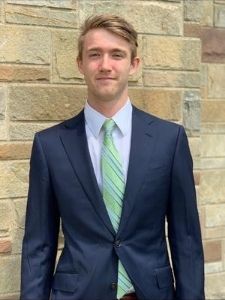 William McMichael, a junior at Wooster College. He is interested in how microglia regulate amygdala neuronal activity following stress. William McMichael, a junior at Wooster College. He is interested in how microglia regulate amygdala neuronal activity following stress.
Despite not being able to be in lab as much (if at all) to directly communicate with lab mates, the addition of virtual opportunities to hear about and present projects have made up for aspects of the distance mentality in the scientific community. Conferences have been more accessible than ever through virtual attendance and presentations has been an easy, cost effective, and relatively convenient alternative to sharing work. As a result, virtual opportunities to stay connected in the academic and scientific community have increased. These have provided a fantastic resource to hear about the latest scientific advancements, and for most, was the closest to interacting with others about their work in light of conference cancellations. For me, this has provided an opportunity to explore conferences that are new to me largely because some that I have been interested in directly or closely overlap with others that I had registered for.
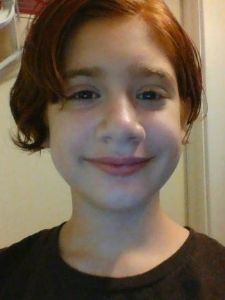 Orly Rosenkranz, a middle school student and STEM enthusiast. Orly Rosenkranz, a middle school student and STEM enthusiast.
Conferences and universities are not alone in converting to virtual platforms - several elementary schools use virtual learning at home. Orly Rosenkranz, future PhD and middle school student, spent her last portion of the school semester learning virtually. While she had a really positive attitude about her learning experience, she misses the one-on-one interaction with teachers and felt that this helped challenge her. After this experience, she more eager than ever to return to school and feels that she has a more independent role in her learning process. She uses online resources like Frontiers for Young Minds to stay engaged in STEM, learn about new topics, and read pieces edited by people her age. While her summer camp experience was canceled, Orly participated in a program where science kits were sent along with a live online curriculum. She was really excited to learn and participate in new things, like how to splint a wound, and hopes to stay involved in opportunities like this. One of the things that Orly said she would enjoy during the school year is to hear from the larger scientific community. Many schools are not able to engage in hands-on science-related activities, and to accommodate some of these experiences, local universities could use this as an opportunity to give back to the community. This seems to also be the case at most colleges. William McMichael, undergraduate researcher at Wooster College, noted that he will really miss lab work but fully intends to take the time to personally reach out to professors to check for opportunities to learn bench skills. In fact, his summer research experience was completely virtual, and included establishing an automated protocol for automated microglia quantification. This experience made him really excited to tackle problems, test hypotheses, and learn a new topic. Similar to Orly, William is excited to see what the new school year will hold and hopes that he will be able to hear more about others work in the field in conjunction with course work. With virtual presentations on the rise, this may provide a good opportunity for local universities to reach out to schools and colleges.
Back To Top
Kalo the Raccoon – An Innovative Response to the New ‘Normal’
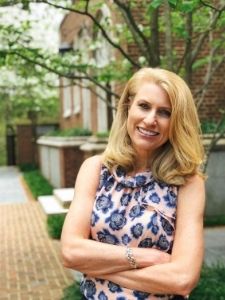 Kelly G. Lambert, Ph.D. Kelly G. Lambert, Ph.D.
MacEldin Trawick Chair and Professor of Behavioral Neuroscience
Co-Coordinator, Neuroscience Program
Past President, International Behavioral Neuroscience Society
B326 Gottwald Center for the Sciences
University of Richmond, VA 23173

How does one create a positive impact? As teachers and scholars, we all want to make a difference in the world but sometimes that proves to be elusive. What can we do in the current pandemic crisis if we are not experts in the fields of infectious disease, statistics or epidemiology? The key to ask what is needed and how can we respond to fulfill that need. Sometimes the need is obvious but the appropriate response is not so clear. That was the situation facing IBNS’s Dr. Kelly Lambert: how do we implement a change in human interaction which convinces young people (pre-K to high school) to socially distance, wear masks and engage in other social appropriate behavior? Dr. Lambert chose to look back to move forward – recalling the effectiveness of the Smokey the Bear campaign to help prevent forest fires, Dr. Lambert created, in collaboration with illustrator Katie McBride, a new international symbol – a raccoon named Kalo (derived from the Greek term for health, to make whole or being beautiful inside and out). This character, who declares its superpower to be science, targets young children in an attempt to foster new beneficial behaviors which, it is hoped, will spread to siblings, parents and the community at large (See: https://www.kalothehero.com/ You can also follow Kalo on Facebook via the kalo the hero FB group). While it is too early to tell if Smokey’s success will be replicated, or even exceeded, by Kalo the Raccoon, the effort demonstrates the commitment – and creativity – of the members of the IBNS in confronting the challenges facing society.
Back To Top
2021 IBNS Annual Meeting Keynote Speakers
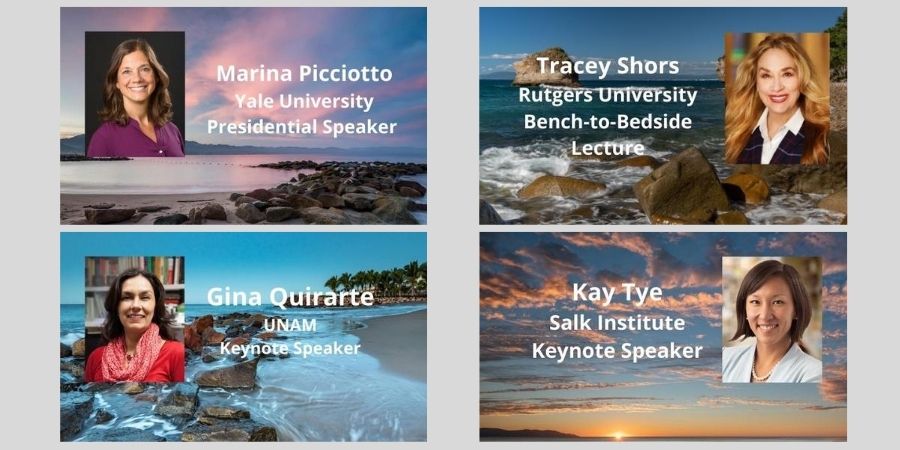
For additional information on the IBNS annual meeting please visit our website at
https://www.ibnsconnect.org/meetings.
Back To Top
Call for Symposium Proposals for IBNS 2021
We are pleased to announce that the IBNS Program Committee is now accepting proposals to develop an exciting program for the 30th Annual Meeting, to be held June 1 - 5, 2021, at the Marriott Puerto Vallarta, Mexico. Symposia play a major role in shaping the IBNS annual meeting by focusing on timely, relevant and innovative research in the field of Behavioral Neuroscience. More information is provided below, so please share the Call with your friends and colleagues. October 1, 2020 is the deadline for priority consideration of a symposium. A symposium includes four (4) speakers and is symposium includes four (4) speakers and is scheduled for two (2) hours. The time and date of symposia are set by the Program Committee. All symposium proposals should include:
- Title
- Name of the chairperson(s)
- Substantive but succinct description of the topic and proposed talks (Limited to 4,400 characters, including spaces.)
- List of four (4) speakers with affiliations and email addresses
- Tentative talk titles
We welcome proposals using innovative formats (debate style, hands-on demonstration or workshop), for which the same 2-hour format will also be available.
IMPORTANT:
IBNS supports diversity in science. As such, we request that you include diversity information pertaining to your submission. Please recognize that diversity takes many forms, in terms of gender, sexuality, race, ethnicity, nationality, professional seniority, institution type, etc. The Program Committee will take this information into consideration when prioritizing symposia proposals. Also, please (briefly) provide justification if more than one presenter comes from the same institution or if the panel consists entirely of only one gender.
Early career trainees (postdoctoral fellows/graduate students) are encouraged to submit symposium proposals together with senior investigators, to gain experience in organizing and co-chairing sessions as well as presenting their work alongside senior researchers in their field; a suggested format would be to include three (3) PIs and one (1) trainee in the panel.
*Please note that IBNS does not provide financial support to symposium speakers or organizers. Each organizer and speaker are expected to cover their own fees, including registration and abstract submission fees. All proposals will be reviewed by the Program Committee and then submitted to the IBNS Council for consideration. Proposals that are not accommodated one year may be re-submitted the following year and will receive the same consideration as all other proposals. Members and non-members of IBNS are invited to submit symposium proposals.
Click here to submit your symposium proposal.
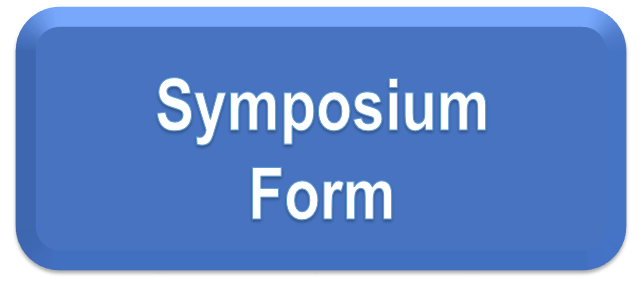
Important Dates:
Symposia Proposals Due - October 1, 2020
Travel Award Applications Due - December 6, 2020
Abstract Deadline - February 3, 2021
Meeting Dates - June 1 - 5, 2021
Back To Top
Recent trends in Behavioral Neuroscience
Memory impairments and alterations in brain function have been widely reported in aging populations. Much of ongoing work seeks to improve age-related cognitive decline and understand the changes that occur throughout a neural circuit following types of memory that show age-related deficits. Recent work from Dr. Sydney Trask at the University of Wisconsin Milwaukee wanted to understand how learning-related changes in neuronal activity change as a function of the aging process. To do this, she used a trace fear conditioning procedure, where aged groups show deficits in the ability to retain a learned fear response. To understand how learning changes activity through the neural circuit required for a trace fear memory during aging, immediate early gene expression was used as a proxy for measuring changes in cellular activity in young, middle-aged, and aged groups. Authors found that brain regions recruited specifically for trace fear are preferentially affected by age, with increases in cellular activity seen in regions like the retrosplenial cortex, amygdala, and hippocampus. To have a more thorough understanding of what regulates these changes in activity, Dr. Trask and colleagues turned to the ubiquitin proteasome system, a known regulator of cellular activity following learning. Interestingly, certain regions recruited for trace fear memory formation show robust decreases proteasome system activity, suggesting a deficit in the ability to degrade proteins, leading to a build-up or accumulation of protein that may drive memory impairments. This work highlights that age-related cognitive decline may be characterized by a deficit to clear or degrade proteins that are synthesized as a result of experience-dependent plasticity.
Trask, S., Dulka, B.N., & Helmstetter, F.J (2020). Age-related memory impairment is associated with increased zif268 protein accumulation and decreased Rpt6 phosphorylation. International Journal of Molecular Sciences, 21(15): 5352; https://doi.org/10.3390/ijms21155352.
Traumatic events and exposure to stressors can lead to maladaptive fear responding that can be detrimental to daily function. The ability to improve heightened fear responding through the use of behavioral therapies may provide a useful therapeutic strategy for fear- and anxiety-related disorders. Safety and extinction learning both provide a way to reduce fear to a stimulus previously paired with an aversive event through slightly different mechanisms. Safety learning involves a new cue that signals safety or the absence of threat and can be presented simultaneously with the aversive-paired stimulus, while extinction learning involves repeated trials of the aversive-paired stimulus. To specifically study how stress influences extinction and safety learning, a portion of a recently published paper by Ellen Woon from the Sangha lab focused on this by using stress-enhanced fear learning (SEFL) in combination with extinction and safety learning. They found that stress exposure uniquely impaired the ability to extinguish a fear response but not the ability for a safety signal to reduce fear. This highlights a potential therapeutic utility in the use of safety signals to reduce maladaptive fear responding as a result of stress-enhanced learning.
Woon, E., Seibert, T., Urbanczyk, P., Ng K.H., & Sangha S. (2020). Differential effects of prior stress on conditioned inhibition of fear and fear extinction. Behavioural Brain Research, 381: 112414.
Back To Top
Guest Editor Profile- Dr. Nicole Ferrara
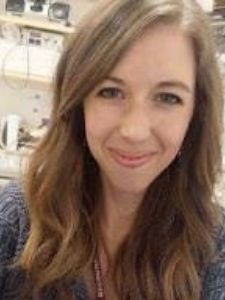 I received my PhD in behavioral neuroscience at the University of Wisconsin-Milwaukee in 2018 under the advisement of Dr. Fred Helmstetter. I am currently a postdoctoral fellow in the lab of Dr. Amiel Rosenkranz studying the role of cortical-amygdala circuits in the regulation of fear and social behavior in both adults and adolescents. My primary focus has been on the role of anterior cingulate cortical inputs to the amygdala in the regulate of age-specific social behaviors and socially-inferred fear responding. To study these processes, I have been using a combination in vivo electrophysiology, quantitative protein assays, and chemogenetics to understand how this cortical-amygdala circuit regulates behavior during development. I am looking forward to talking about some of this work as part of a symposium at the meeting next year. I received my PhD in behavioral neuroscience at the University of Wisconsin-Milwaukee in 2018 under the advisement of Dr. Fred Helmstetter. I am currently a postdoctoral fellow in the lab of Dr. Amiel Rosenkranz studying the role of cortical-amygdala circuits in the regulation of fear and social behavior in both adults and adolescents. My primary focus has been on the role of anterior cingulate cortical inputs to the amygdala in the regulate of age-specific social behaviors and socially-inferred fear responding. To study these processes, I have been using a combination in vivo electrophysiology, quantitative protein assays, and chemogenetics to understand how this cortical-amygdala circuit regulates behavior during development. I am looking forward to talking about some of this work as part of a symposium at the meeting next year.
I am interested and involved in outreach opportunities and promoting graduate student and postdoctoral research at Rosalind Franklin University and through the Women in Learning (WIL) organization. As a WIL team member, I am really excited to be helping organize part of the “Reimagined” event that will feature four outstanding graduate student and postdoctoral researchers this September and will award a one-time research grant for an underrepresented woman in the learning and memory field. I also had the opportunity to help organize a summer virtual talk series featuring postdoctoral researchers and the first annual Neuroscience Research Symposium at Rosalind Franklin University, where we heard about some great work from a variety of different neuroscience backgrounds. I am currently also helping organize accessible, virtual neuroscience events for elementary through high school students to continue outreach efforts at Rosalind Franklin University.
In my free time, I enjoy listening to podcasts, watching movies, running, and hanging out with my cats.
Back To Top
|